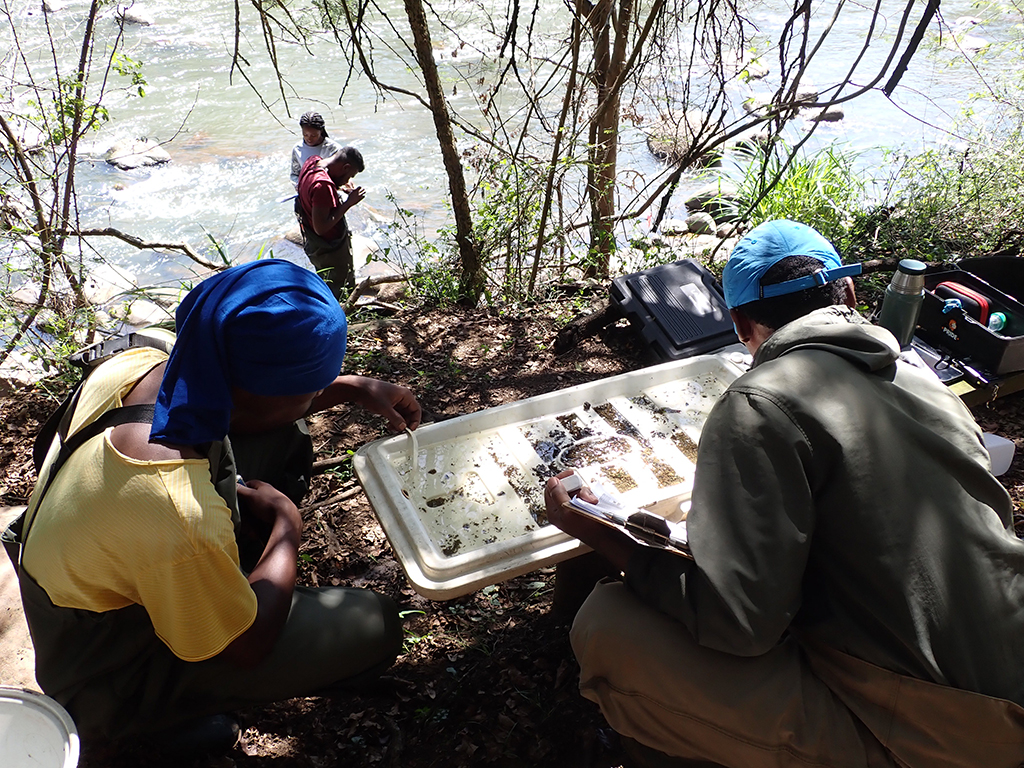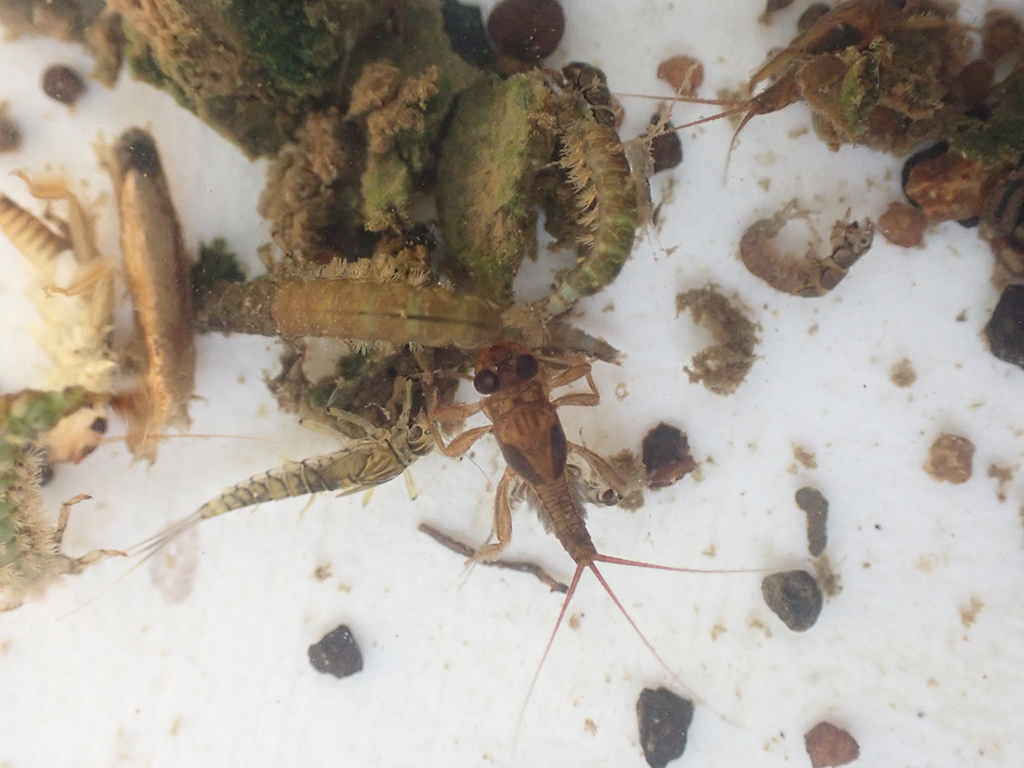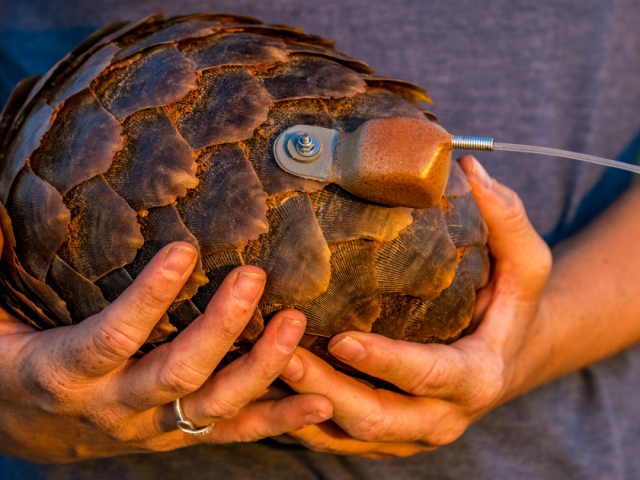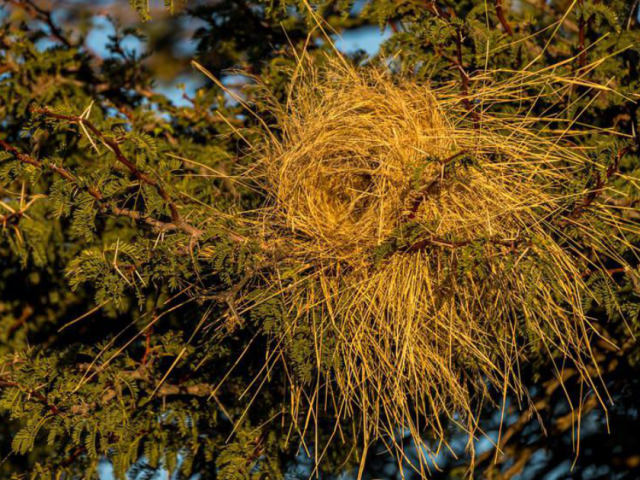Yves Vanderhaeghen interviews a team of UKZN researchers studying how biodiversity can curtail both extreme flooding and the potential perils of heat stress in cities.
Rivers are more than water. The devastating floods which tore through the Durban area in 2022 were exacerbated by tons of debris washed down the uMngeni River from many kilometres away. Subsequently the river brought raw sewage whose stench still lingers over the beaches.
But the reason for the river’s misbehaviour, its violent unruliness, is to be found not just in exploding populations and their polluting effect, but in a multitude of small and large ecological disruptions along the way. This in turn has more than halved its self-healing rate, or capacity of the river to clean itself, and provide natural hazard regulation and buffers, and of course fresh water and fish which benefit people who need these resources to survive.
To better understand the intricacies of biodiversity loss along the river, as well as on land, a team of researchers from UKZN, led by Oppenheimer Fellow in Functional Biodiversity, Professor Rob Slotow, are conducting a number of big projects “that focus on understanding the contributions that biodiversity makes to people … and how these benefits can be linked to economic, social, and societal outcomes for sustainable socio-economic development”. An understanding of ecological resilience and how to ensure its sustainability will provide valuable information to guide government, municipalities and developers.
Prof. Slotow explains that his field, Functional Biodiversity, looks not only at how biodiversity functions, but demonstrates linkages which inform sustainable practices.
He says “there’s a gap in the environmental and biodiversity sector, and the translation of what that sector is doing in human wellbeing outcomes. For the most part the sector focuses on for example protection of land areas, or conservation of habitats or species. We say that this has benefit for people, for example through ecosystem services, and we assume that the other sectors, for example agriculture or health or other sectors that might be using the benefits of biodiversity, will then take it up.”
“So we look at how does biodiversity function, and produce those values, services and benefits for people, and how can we demonstrate the relationship between that and the human outcomes, and we try and make those linkages more clear in a way that conservation and protection of the environment can be better resourced, and secondly that there’s a much more effective translation and use for sustainable practices and a reduction in unsustainable practices.”
One example of biodiversity function, says Prof. Slotow, is “carbon sequestration. We know that if you’ve got carbon being sequestered by trees , grass or forbs into the soil, that we are mitigating climate change effects. We know that in the abstract sense, but there has not been much work looking at the actual characteristics of the biodiversity of the system and how it is performing that function. We know that there are microbes that live in roots of certain plants, and they promote the carbon cycle in the soil, and we want to know what the effect is if they are in the soil or not.”
A second example is water. “One of the key resources that the environment offers humanity is water. Now if we think about biodiversity: water takes place within a catchment that has certain habitat characteristics, many of which are created by biodiversity, or are biodiverse in themselves. For example trees, which stabilise a river bank, or reeds in a river, that slow down the flow of the river. If you remove or degrade that biodiversity, there could be major loss to infrastructure or human life through a flood that would otherwise be attenuated by that structure along the river.”
Prof. Slotow’s colleague, Dr Matthew Burnett, a post-doctoral researcher focusing on freshwater and behavioural research and its application in water resource management, emphasises that water is more than just water, and must be understood in the context of the ecosystem services that biodiversity provides to the livelihoods of people. He says “water resources are often seen as a matter of water provision through quantity for the different sectors, but it provides in other ways. So one would look at, for example, fisheries that are tied to a water source within a river catchment, and which provide fish as a livelihood and for subsistence along the river.” And as much as quantity is important, the food resource for subsistence is vital, he says.
“Adding to that”, says Prof. Slotow, “there is certain biodiversity in the water that can clean the water and improve its quality and remove toxins which would otherwise be concentrated within fish. So you can have a lot of water and fish in the system, but if you’re missing some aspect of the biodiversity that might be cleaning the toxins out the water, the toxins will feed through the fish to people which increases food risk.”
This is why water is such a big focus in the research project, and “because it is linked directly to food production, which is a major element of what we’re looking at, and the biodiversity associated with food production systems on land,” says Prof. Slotow. “We’re looking primarily at smallholder farmer communities that are located along the catchments. They depend a lot on natural resources for their inputs. For example they depend on natural water provision through rainfall etc for irrigating their crops, or taking their cows to the river. They also depend on natural processes, for fertilisation or pollination, for example. All of those functions are inputs into an agricultural system that in the commercial sector is often expensive to provide.”

There is a bigger picture, and as much as water and water systems are vital to environmental and human welfare, so is what happens on land.
That is why “we also look at the terrestrial system in terms of climate change,” says Prof. Slotow. “One of the big risks of climate change, particularly for example in Pietermaritzburg, is the heat stress. We know that Pietermaritzburg is predicted to have the highest heat-stress risk from climate change in the country, among some other places, and so we look at how terrestrial biodiversity mitigates heat stress. For example, what characteristics of biodiversity are good for reducing extreme heat events. We know, if you take the simple example of trees in a hard infrastructure space such as cities or towns, that they have a cooling effect. We are trying to understand, however, more broadly how that cooling effect works based on the biodiversity that’s producing it. So if you have a proper, lush grassland, with forbs cover, what is its heat mitigating effect, relative to bare ground from overgrazing or cropping?”
But knowing how biodiversity works is not enough. “We don’t know how to translate that into policy and practice,” says Prof. Slotow. “The issue is not that we don’t have to study the biodiversity, we may need to study some specific elements to enable the translation of that into policy and practice. And to do that we may need to scale it up. Government is not interested in what happened at a particular point. They want to know what’s going on in the system so that they have a general policy and guidelines and practices. Part of the reason we are studying across catchments (the uMngeni and uMkomaas catchments), is so that we have the ability to scale our knowledge more broadly. We do need specific on the ground information, and for that we use for example remote sensing techniques to be able to scale more broadly. Then we can go to policy makers and show them the scaling and the potential return on investment in terms of an intervention to improve service delivery.”
The Durban floods have demonstrated the urgency of this focused research, and Prof. Slotow says “we work closely with provincial co-operative governance, who have oversight of municipalities and who deal with disaster management, and we have a programme with them with funding for post-docs who will help us work on different components, which will inform their planning system. We have many other funding partners, apart from the Oppenheimer Generations Research and Conservation grant, to do the work.”
The research on biodiversity is not starting from scratch, and Prof. Slotow and his team work with many other teams on ongoing projects, which have been looking at components of the issue. However, they are now integrating them all through the current process.
Dr Burnett’s specific area of focus is “looking at water within the system and how it’s driving fish community structures, which would relate to fisheries and people who are targeting them either for recreational or subsistence purposes. Because water quantity is an important driver within the system, for biodiversity, we’re looking at several sites across the uMngeni and uMnkomaas catchments, where we will do hydraulic modelling within the one-in-100-year floodplain to see how regulating a system against not regulating it would be driving biodiversity, and if we do regulate a system, are there negative impacts on biodiversity that can be better mitigated into providing more adequate environmental flows for example. Or is it better to mitigate through a reduction of in-stream barriers to regulate flow and look at alternative ways to providing water to people.”
In the case of the uMngeni catchment, how healthy is the system?
“We can’t just focus on one area,” says Dr Burnett. “The area above the Dargle Falls for example would be representative of only one biome within the whole catchment, and that is why we have several sites, because each site will have different stresses associated with it. We do look at ecological scores, or the ecological state of rivers, but we want to move beyond just saying that the river is in a healthy state or a poor state. We want to make a linkage to what the economic cost is of that ecological state, and how can we do that using key ecosystem services that are jeopardised when the river is in a poor ecological state. As an example, there may be lots of fish, but they are small when what the fisheries need are larger fish. So water may be in a good ecological state, but that does not flow through to and benefit the associated fisheries.”
Prof. Slotow adds that concern over the health of the river is important, and that is why the uMngeni was chosen, because of how important it is in servicing Pietermaritzburg and Durban. It is one of the most affected rivers, “but as you move down the river the biodiversity actually improves its quality. So you have bad stretches but it gets cleaned, and then you get another bad stretch because of some pollutant. So you must bear in mind we’re not looking for a pristine river to study. We’re looking for a place where our understanding can be translated into affecting and improving the lives of people. And Pietermaritzburg and Durban are the two big centres in KZN; they contain a large proportion of the population of the province.”
But pristine areas, such as the Umgenipoort research centre near the head of the uMngeni catchment area, do provide a benchmark. Dr Burnett says that areas “where remedial action takes place along a polluted river are very important in providing ecosystem services to downstream users. Without those fairly pristine areas, you could have an even more devastating impact on the system, and the services it is providing.”
Another research team member, Dr Caswell Munyai, a senior Lecturer in invertebrate biology, says that at the Umgenipoort research site “we are documenting how riparian arthropods respond to flow changes due to floods along the uMngeni River. At the upper most section of the uMngeni River we are sampling at, Wakefield farm, and also at Hilton college Nature Reserve, Fountain Hill Estate, Nkanyezi, the uMngeni-Duzi confluence, and Mzinyathi.” Dr Munyai’s specific focus within the broad project is to “document the response of arthropods (a dominant animal group) to ongoing land-use change such as timber plantations and various other anthropogenic factors in riparian zones in KwaZulu-Natal, particularly in the Midlands. We need to understand how biodiversity can co-exist with current developments to preserve both human livelihoods and the natural environment.”

He says that “findings from these studies should inform land managers and conservationist on how biodiversity responds to timber plantations and various natural and anthropogenic activities long the uMngeni River. The latter is important for informing sound strategies to preserve and conserve arthropods and their various ecosystem services and functioning.”
Dr Munyai notes that “we have recognised how timber forestry is an essential economic commodity in rural communities as it creates employment opportunities. As of 2019, the forestry sector in South Africa employs 147 400 people. Therefore, to support this growing industry, authorities need to be equipped with sustainable forestry practices that will result in good economic returns and, at the same time, protect biodiversity.
He sums up the importance of understanding the role of arthropods in ecosystems by quoting the American biologist, naturalist and entomologist E. O. Wilson: “People need insects to survive, but insects do not need us. If all humankind were to disappear tomorrow, it is unlikely that a single insect species would go extinct, except three forms of human body and head lice…But if insects were to vanish, the terrestrial environment would soon collapse into chaos “.
Prof. Slotow says that the very approach used in their project is a departure from the academic norm in its embrace of transdisciplinary, “which takes multiple disciplines across different scientific areas, combines it with the direct involvement of policy makers and practitioners (in government and cities), and also involves people on the ground, in communities, as part of the study process. What it does is changes the way we look at and think about systems, and provides a quality feedback assurance process for the research, and it breaks down the barriers so we can have integrated solutions, and it facilitates the uptake because people are already involved in the whole process and they understand the methods and results. And because it includes practitioners, the accessibility of the information is higher. It really makes sure we’re not sitting in an ivory tower, but are down on the ground doing research.”
“So as a conservation person,” says Prof. Slotow, “I’ve worked with food security, and just before this meeting I was looking at a policy brief about the broiler production system in South Africa. I work with issues around diseases, mental health, bringing my capacity to problems that I partner with people who are experts in those areas for a more integrated outcome.”
And the ultimate objective, Dr Burnett reiterates, is that “sustainability can be done. If you look after the biodiversity it can translate into a better environment and a better economy for all people. And this research is impactful in that way.”
Yves Vanderhaeghen writes for Jive Media Africa, science communication partner to OGRC
- Tracking the Shangani Wanderer - June 18, 2025
- Rescue, rehabilitate, release: tracking the comeback of South Africa’s pangolins - June 18, 2025
- Fewer weavers, fewer homes: why nest builders matter in the Kalahari - June 17, 2025
Additional News
Pangolins are elusive and heavily trafficked. At Tswalu, researchers are working to uncover their secrets and aid conservation.
Declining Sparrow-Weavers may threaten other birds that rely on their old nests for shelter.





